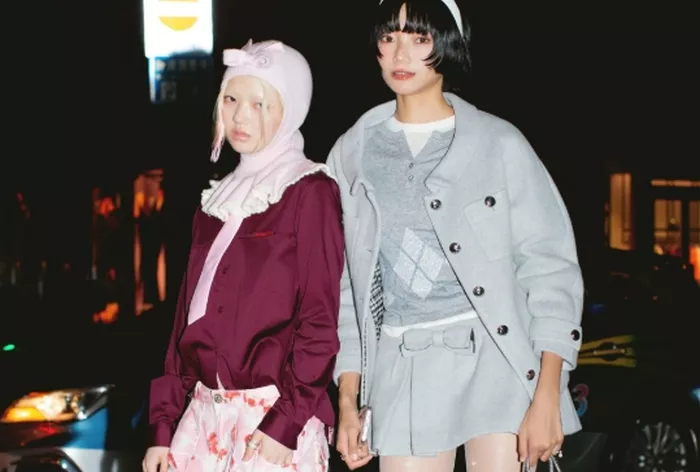The Autumn/Winter 2025 season of Shanghai Fashion Week (SHFW) is set to unfold from March 26 to March 31, even as China grapples with a turbulent economic climate. With consumer spending at historic lows, this year’s fashion week carries a sense of urgency. However, the show must go on, and despite the ongoing economic slowdown, Shanghai remains a key player in the global fashion scene, alongside other non-big four cities like Copenhagen, Seoul, and Tokyo.
Unlike other major fashion capitals, SHFW primarily showcases independent designers, many of whom are helmed by millennials and Gen Z creatives. The calendar is divided into two main sections: the larger establishment shows held in Xintiandi, a chic shopping and entertainment district, and the Labelhood lineup, which takes place in the historic Bund area. The Xintiandi shows are headlined by established names such as Comme Moi, founded by Lü Yan, one of China’s first globally recognized models, while the Labelhood segment features emerging talents like Mark Gong and Shushu/Tong.
As Shanghai Fashion Week increasingly gains international attention, several designers are opting for off-calendar events, like Jacques Wei and Samuel Guì Yang, both of whom are regular standouts at SHFW. However, unlike Europe and New York, live streaming is not an option in Shanghai due to Instagram’s ban in China. Instead, most updates are shared via WeChat, with SHFW and Labelhood using the platform to keep audiences engaged. The Vogue app and Instagram’s Vogue Runway account also provide coverage.
This season, Shanghai Fashion Week won’t see a Moncler Genius-style spectacle like last year. Instead, Vogue China will launch the third edition of its Fashion Fund, an initiative designed to support emerging designers. With China’s economic outlook uncertain, this year’s fashion fund is even more critical for young talent.
Despite these challenges, SHFW continues to persevere. China’s post-Covid deflation has made the fashion market tougher to navigate, with lower consumer spending and global economic pressures exacerbated by U.S. tariffs on Chinese exports. Nonetheless, SHFW has managed to retain a strong contingent of rising stars.
One noticeable shift this year is the absence of major designers like Chen Louis Shengtao, Boogie Liu, and Xander Zhou, who have chosen to release their collections digitally rather than showcasing them in person. This marks a change from the usual high-profile participation at Shanghai’s fashion week, especially as new talent takes a backseat in favor of showroom presentations rather than runway debuts.
Returning labels like Oude Waag by Jingwei Yin and Mark Gong will continue to make waves, with the latter having dressed global icons like Megan Thee Stallion and Lisa. New names are also stepping up, including Papi Lav, Le Ngok, and Zita Tan, who will showcase their avant-garde creations at Labelhood’s showroom. These emerging designers bring a fresh perspective and contribute to the eclectic mix of young and established labels at SHFW.
International designers are not missing from the schedule. New York-based duo Siying Qu and Haoran Li from Private Policy, who skipped New York Fashion Week earlier this year, will debut their AW25 collection in Shanghai. Marchesa by Georgina Chapman will present a collection on the final day, joining the couture sub-calendar. Other notable international participants include Italian designer Lorena Antoniazzi, Vietnamese label LSoul, and Dolce & Gabbana, who will return to the Chinese market with a conversation featuring Susan Fang.
While Shanghai Fashion Week faces challenges, it continues to showcase the creativity and resilience of the global fashion community, balancing established labels with the potential of rising stars.
Related Topics
- AÍMER Unveils the Groundbreaking 2025SS Collection at China Fashion Week
- Australian Fashion Week Faces Changes Amid Streamlined Format
- Step Back in Time: 19th-Century Men’s Fashion on Display at Whanganui Regional Museum

